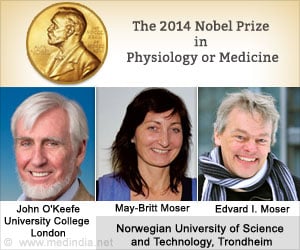The 2009 Nobel Prize for medicine has been announced! It has been awarded to researchers Elizabeth Blackburn, her student Carol Greider and Jack Szostak for studying the way chromosomes are protected and for discovering the ‘immortality enzyme’ telomerase.
The research is believed to have ample implications on diseases such as cancer and other age-related conditions.In keeping with the Nobel tradition, the prize for medicine has been awarded first. It will be followed by the prizes for physics, chemistry, economics, literature and peace.
About the Scientists
The Nobel in Medicine is being awarded to the three scientists:
--Elizabeth Blackburn - Australian-born professor working at the University of California in San Francisco (UCSF) as professor of biology and physiology
--Carol Greider- professor, Johns Hopkins University School of Medicine, Baltimore
--Jack Szostak – professor, at Harvard Medical School and investigator at Massachusetts General Hospital, Boston
The Nobel Laureates will share a $1.4 million purse and a diploma, along with an invitation to the prize ceremonies to be held at Stockholm. For the first time in history, the Nobel prize for medicine will be shared by two women .
Canadian scientists Ernest McCulloch and James Till, whose discovery of the stem cells provoked controversial research world wide, were strong contenders for the prize.
The Work
The scientists have been honored for –
- Studying the way chromosomes are protected by the cap- like telomeres
- Discovering the enzyme telomerase, that allows cells to divide incessantly without dying.
Telomeres are cap-like structures at the tail -end of the chromosomes that are bestowed with a unique DNA sequence that prevents their deterioration. The telomeres also act as protection against chromosomal rearrangement which would, in itself, result in abnormalities.
Telomeres are steadily lost with each cell division and this exposes the chromosomes to unfavorable possibilities. This steady shortening of the telomere is believed to be the reason behind dangerous diseases such as cancer, and also aging.
Blackburn and Szostak strived to explain that the unique DNA sequence in the telomeres protects the chromosomes from deterioration while Carol Greider and Blackburn identified the enzyme telomerase that replenishes or helps to rebuild the lost sequences of the telomeres.
Implications
If the cap –like telomeres are shortened, cells age. On the other hand, if the enzyme telomerase activity is sufficient enough, telomere deterioration can be controlled and cellular aging thwarted. Cancer cells divide endlessly based on this principle.
On the contrary, some of the inherited diseases, such as congenital aplastic anemia, are believed to occur due to defects in telomerase activity.
Blackburn’s discovery of telomeres has evoked a spurt of interest in growth, disease and aging. She proved that stress has a definite impact on telomere reduction –a fact that helped to re-establish the mind-body connection.
Understanding the basic cellular function will pave the way for more research in anti aging and also in the development of novel therapeutic strategies.
The flip side
Ageing is a far more complex process than man has ever imagined it to be and the telomere theory could possibly be just the tip of the proverbial iceberg.
Increased telomerase activity could ward off aging for a while but it increases a person’s risk to develop cancer. In other words, the steady shortening of the telomeres and the accompanying decreased telomerase activity is believed to be a process that is inbuilt in man as a survival mechanism.
Already speculations are rife regarding the possibilities of extending life with telomere lengthening. Experiments based on these speculations have been futile, thus far.
It might be appropriate to conclude that our understanding of the cell’s complex dynamics has received a boost—this, we hope, would pave the way for disease control through effective cures.



Source-Medindia
Dr Reeja Tharu/S










